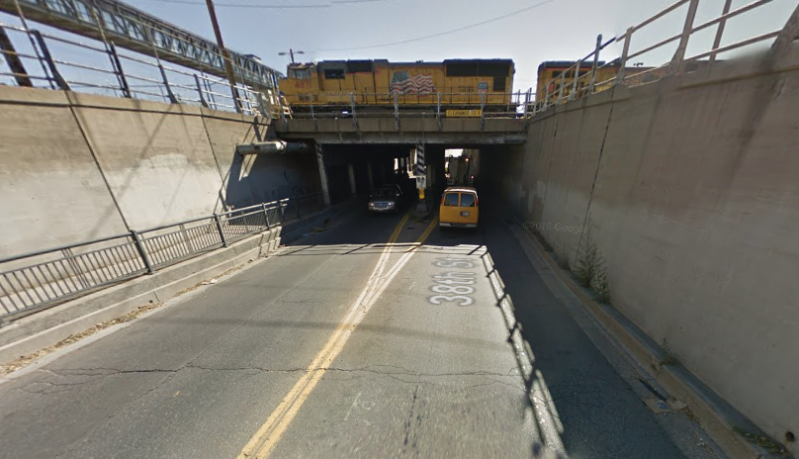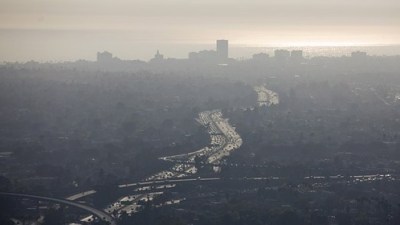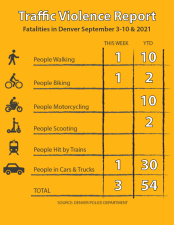Colfax BRT, Sidewalks, and More Protected Bike Lanes on the Shortlist for Bond Funding

How will the Hancock administration spend hundreds of millions of dollars in transportation funding from the bond measure on the November ballot? Will Denver finally accelerate the implementation of 21st century projects that transform city streets with better transit, walking, and biking infrastructure?
A citizen committee charged with prioritizing transport projects for the citywide bond package Denverites will vote on — worth up to $900 million — will help answer those questions this week.
Mayor Hancock verbally committed a “significant portion” to the transportation and mobility portion of the package back in February. Following yesterday’s news that the city’s bonding capacity is higher than originally thought, the committee charged with prioritizing transportation and mobility projects estimates that between $400 million and $500 million will be available for transport.
The group of neighborhood leaders, including advocates for walking, biking, transit, the disabled community, public schools, and affordable housing, began whittling down the project list Tuesday night following weeks of debate over how to rank projects.
The preliminary list has a lot of winning ideas that will make a big difference for walking, biking, and transit — but it’s subject to change.
What’s on the table
On Tuesday the group shaved the initial list of 100 or so projects down to around 30, totaling $577 million. Most of these would retrofit Denver streets with elements like protected bike lanes, transitways, and sidewalks and crosswalks.
However, two of them come bundled with road expansions. A project for Peoria Street in Montbello includes a ped-bike path, but also additional car lanes. And safer walking and biking routes across the 38th Avenue underpass, near the 38th and Blake light rail station, would come with two more car lanes.
Projects like those contradict two of the committee’s criteria, said WalkDenver Associate Director Jill Locantore, who’s on the committee: Moving people in a street’s existing footprint, and reducing solo car trips. “The evidence has shown over and over again that if you expand roadways you induce more driving and more single-occupancy mode trips,” she said.
The list is still in flux, but here’s are some big-ticket projects on the list so far. You can see detailed summaries on the city’s website. Most of the dollar figures represent the whole project, but some refer to an initial phase.
- East Colfax bus rapid transit: $55 million
- Sidewalks around the city: $41.9 million
- Protected bike lanes: $30 million
- Speer/Leetsdale reversible transit lanes, bike lanes, and crosswalks: $56.1 million
- Transit signal priority, better bus stops, and bus bulbs on MLK, Federal, Alameda and West Colfax: $20.4 million
- Broadway protected bike lane, transit lane, and crosswalks: $22 million
- 21st Street “urban trail”
- West 13th Avenue multimodal reconstruction: $41.7 million
- Colfax Avenue crosswalks, curb extensions, and streetscaping: $20 million
- Alameda Avenue underpass rebuild, from Santa Fe to Broadway, with bike lanes and sidewalks: $49.5 million
Transformational projects vs. deferred maintenance
The city is behind on routine but necessary street upkeep like paving and gutter work, and some Denver Public Works staffers want to see bond money patch those holes. But committee members see street maintenance as a basic government responsibility that should be covered by the city’s annual budget. When taxpayers pay extra through a bond measure, it should cover one-time upgrades, they say, instead of helping to paper over a structural deficit.
“When we were initially presented with a list of projects, it was an array, like on a Christmas tree, of wonderful ornaments that we could pick from to truly be transformative,” said Rosemary Stoffel, a University Park rep on the committee. “And then we were presented with the option of basically a lump of coal.”
Some committee members had an appetite for spending 5 or 10 percent of transport funding on maintenance — as opposed to the 37 percent that went to maintenance in the 2007 bond. No deferred maintenance projects made the first cut Tuesday, but they can be added later by the executive committee, the City Council, or Hancock’s team.
What’s next?
The committee members will negotiate among themselves and further prioritize projects Thursday, with a final meeting May 11. The executive committee will then weigh the group’s recommendations against those of parallel committees for the arts, public safety, parks and rec, and city facilities, and in turn recommend a project list to Hancock. The City Council will have to approve the projects before sending them to the ballot in November.
You can speak at the transportation committee as well as any of the subsequent executive meetings. Just send an email 24 hours beforehand to register.


